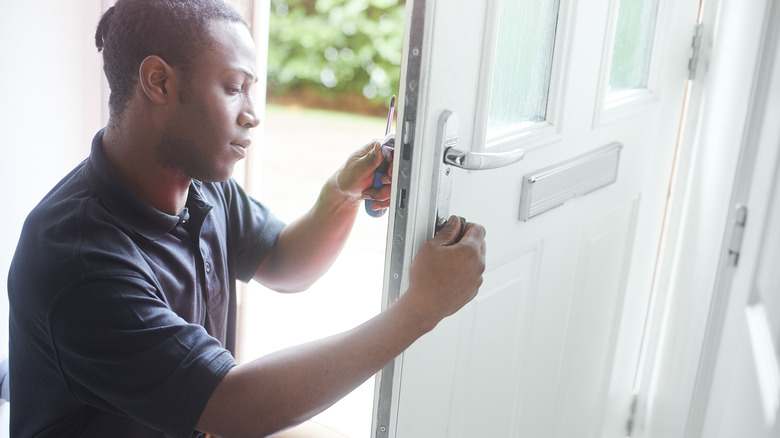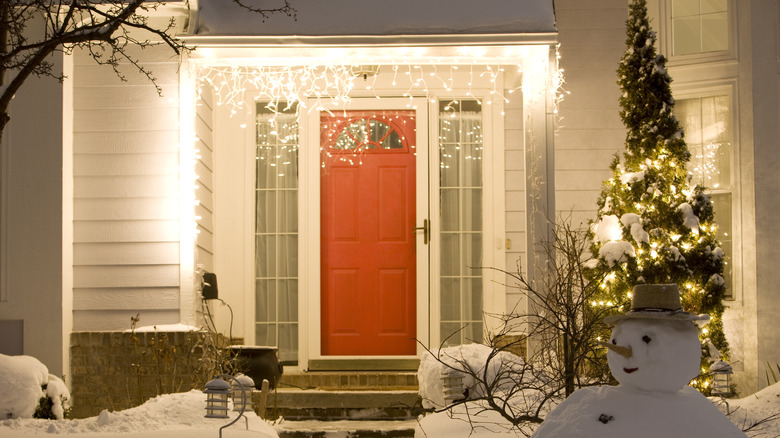Need A New Front Door? Don't Forget To Check For This When Shopping
Getting a new front door is one of the easiest ways to boost your home's curb appeal. It's impossible to miss and is often one of the first things a person sees when looking at your house for the first time. Whether you choose something stately that adds gravitas to your home's exterior or something splashy that captures the imagination, your door can add a lot of value to your home. But the value doesn't stop with its aesthetic. You also want to choose an entryway that has stellar insulation. There is nothing worse than a drafty door, and you don't want to see your energy bills rise because air is escaping through it. But how can you be certain that your pick won't let all the heat out? You need to check its U-factor.
A U-factor calculates how much energy the door transfers, which translates to how much heat can pass through it. The lower the number, the more insulating the product is, which is what you want. Because energy prices are now surpassing inflation rates, this is important to keep in mind not only for your comfort but also for your budget. Here is how to find a door's U-factor and how to read it.
Look for the door's U-factor
To help reduce your energy costs at home, find the door's U-factor. You can locate it on its National Fenestration Rating Council (NFRC) label. The NFRC is an industry-recognized nonprofit that thoroughly tests windows and doors to rate their energy efficiency. If your door doesn't have an NFRC label, it's best to skip it because it hasn't been properly vetted for its insular qualities. The label will have a section that reads Energy Performance Ratings, which is where you will find the U-factor.
So, how do you read it? The rating ranges from 0.20 to 1.20. While a rating of 0.20 is the best because it's the lowest, any rating between 0.30 and below is seen as high-performing and well insulated. You can rest assured it will adequately block heat loss. However, the number should also reflect where you live. If you live in one of the northern states where winters are harsher, you should aim for a front door with a rating of 0.30 or less to ensure the heat stays inside. If you're in the northern central states, you can get away with a 0.32 rating and still rest assured you have an energy-efficient pick. Southern states can increase that number to a 0.35 door, which will keep outside hot air from entering through the front of the house. But if you live in the lower south, which rarely experiences colder weather, that number can bump up to 0.60.

